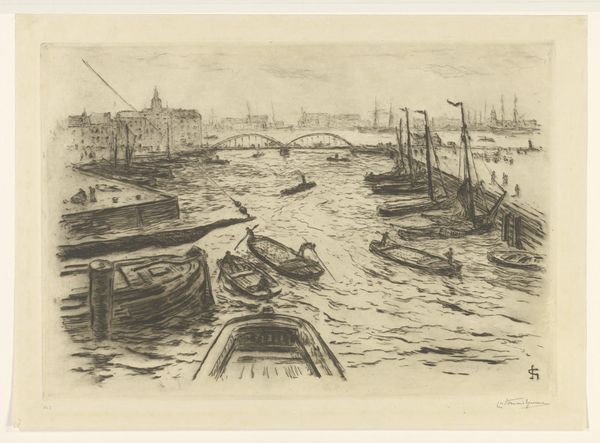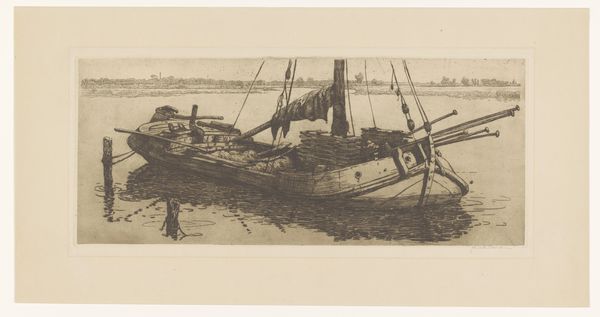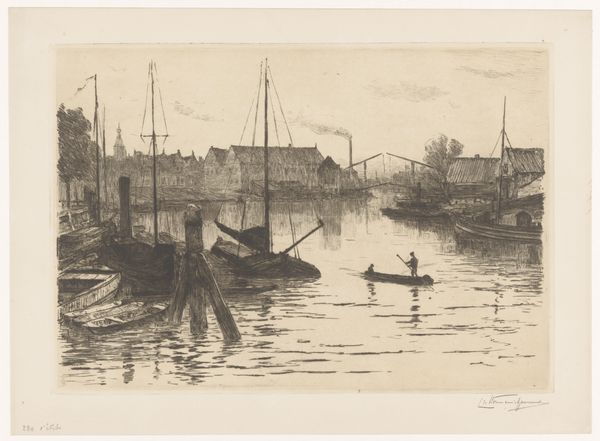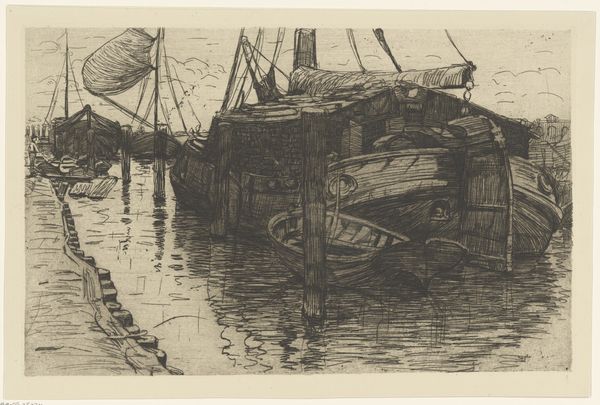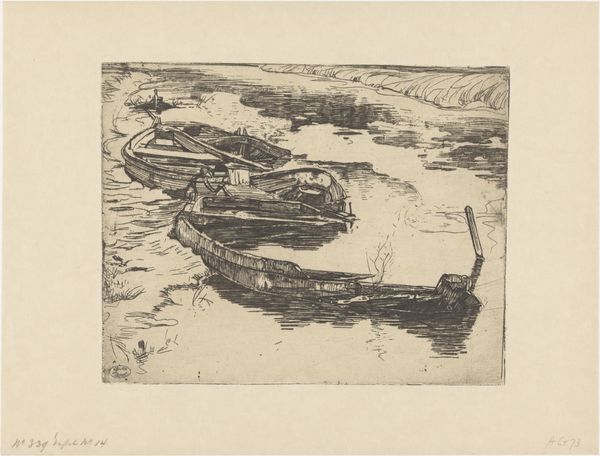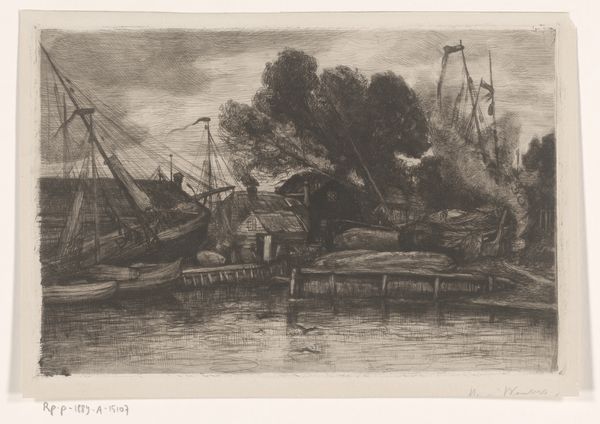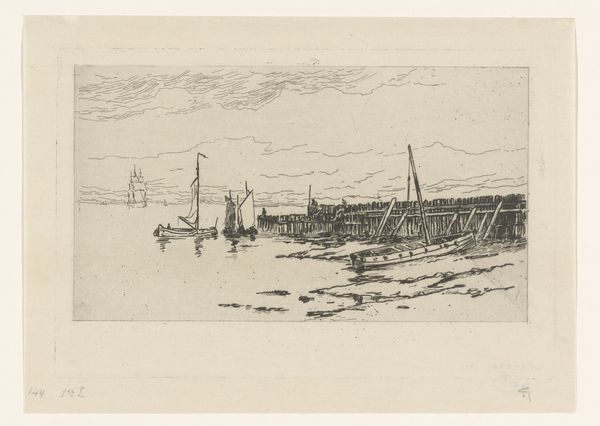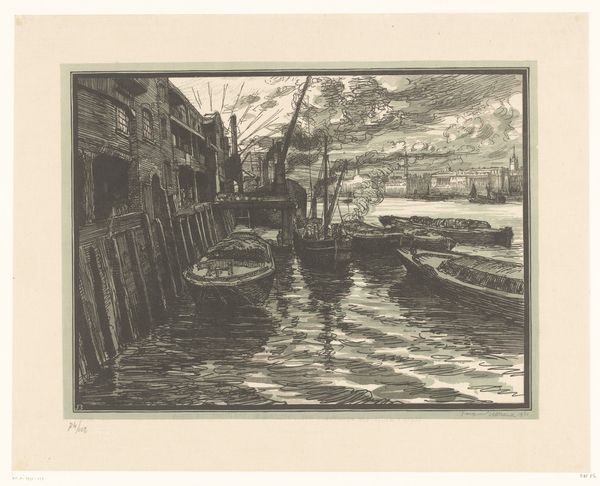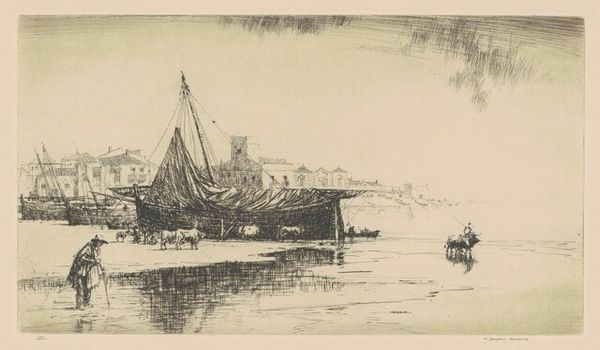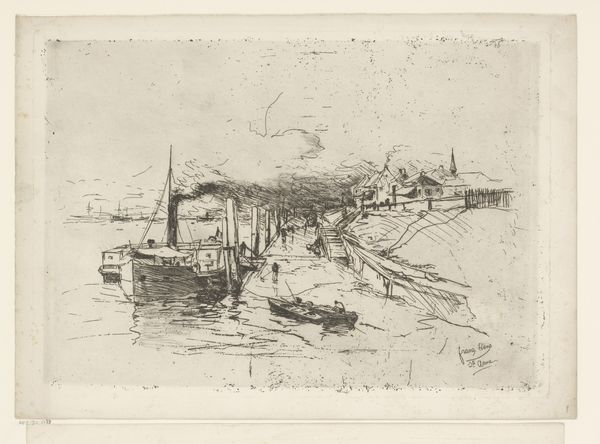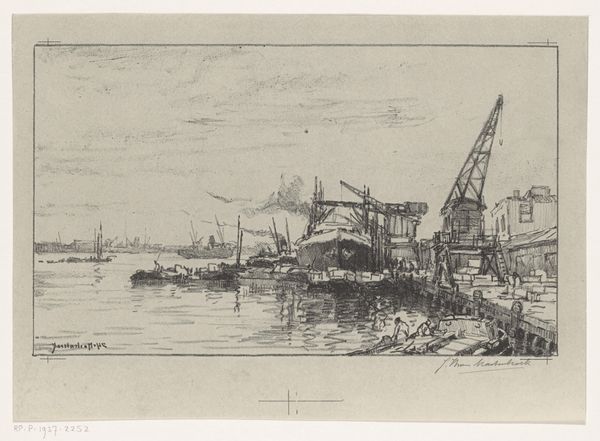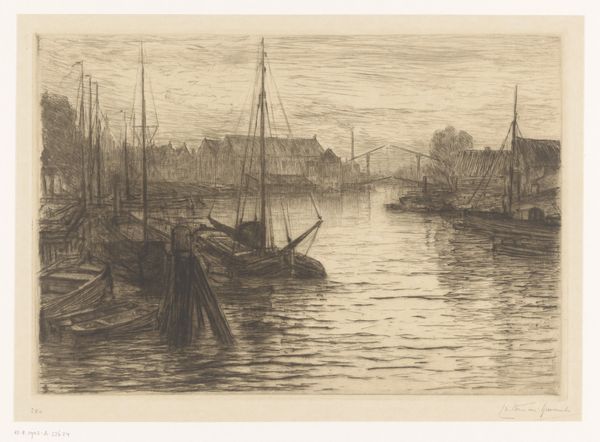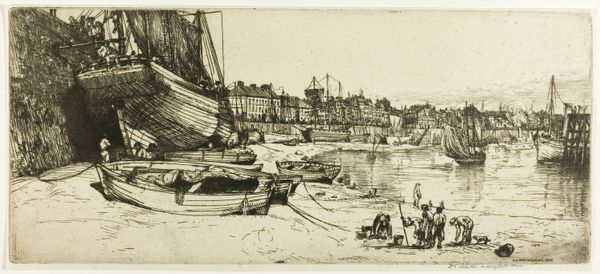
drawing, print, ink
#
landscape illustration sketch
#
drawing
#
quirky sketch
# print
#
pen sketch
#
landscape
#
personal sketchbook
#
ink
#
ink drawing experimentation
#
pen-ink sketch
#
pen work
#
sketchbook drawing
#
storyboard and sketchbook work
#
sketchbook art
Dimensions: height 213 mm, width 320 mm
Copyright: Rijks Museum: Open Domain
Editor: This is "Schepen aan de Schinkel," a print by Maurits van der Valk, dating from between 1867 and 1903. It's an ink drawing that features a somewhat chaotic, yet charming, waterscape of boats. What kind of story do you think it tells? Curator: The apparent chaos you observe is quite interesting in relation to the rise of industrialization at that time. Notice how the artist doesn't romanticize these boats, they’re simply present as a crucial part of the Amsterdam’s waterscape. How does it compare to the glorification of ships you often see in maritime paintings from earlier eras? Editor: That's a good point, there’s a stark contrast between the romantic seascapes of the Dutch Golden Age and this seemingly unembellished scene. It does feel more… real. Was the Schinkel an important location? Curator: Absolutely. The Schinkel was vital for trade and transport connecting Amsterdam to other parts of the Netherlands. It was a working river. Representing this in art was a way of acknowledging the socio-economic importance of the area. Do you notice anything about how Van der Valk uses line and composition to draw attention to certain aspects of urban development? Editor: The density of detail in the buildings along the back almost overwhelms the individual boats. The emphasis seems to be shifting away from maritime glory towards everyday urban life. Curator: Precisely! And how this reflects a shifting public consciousness influenced by modernization and a focus on representing the ordinary lives of the working class. Editor: I hadn’t considered the artwork that way. Seeing it as a document of its time, showcasing the importance of the Schinkel River to Amsterdam's trade and evolving social dynamics, really enhances the experience. Curator: Indeed. It's through understanding the socio-political and economic history embedded within art like this, that we truly gain insight into past societies.
Comments
No comments
Be the first to comment and join the conversation on the ultimate creative platform.
